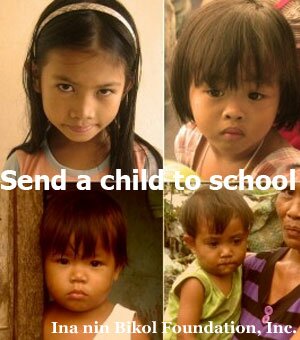The Booth is a Marketplace
The many times we were with the media in our advocacy works were always tinted and hinted with political malice. There has always been that kind intimation for political leaning-and many times they were not intimations, they were blatant propaganda. One commentator would always make fun of the situation and would tell the reporter interviewing me, pakisabi ngantig ki Dato, buwisit siya ha.
One station, which obviously acts as an evangelist for another politician always took the positive stance, instead of negatively attacking, to compare their sponsor with the adversary politician. Instead of saying the remark uttered by the commentator of the station earlier mentioned, they would say kaya ngaya si gob baga kontrang maray talaga digdi sa dam ta makakaraot man talaga, maray pa ngaya si gob.
Where can we go then, when our media is contaminated with this malady?
My increasing rage over the Libmanan-Cabusao Dam Project and its insensitive and deceitful proponents was put to an almost overshoot when the first radio ad employing children was broadcasted on air. The ad employed children notwithstanding the fact that the very nature of the ad was no at all rate in congruence with the nature of the child. I am a creative writer, and in this capacity, as much as I desire to read texts are they are, the interpretation of text would always elicit intertextual perspective. In the case of the radio ad, it was obvious. Children were made to curse-muda-when the term peste was mentioned to refer to a group of people. It meant calling a group of people a sort of a menace, irritant, obnoxious being, toxic, whatsoever. The advertising agency, standing for the advertiser or the financing sponsor, must have missed the point, as much as it must have missed the fact that those who were opposing the project were a populace of a community, of a town, or towns in the case of Lupi and Sipocot. The very nature of the ad defies the very nature of the child. The ad itself, in form and content, was problematic, assessing it from the point of view of media studies.
The ad costs fifty thousand pesos a month, and in the contract, as related to me by an insider, would last for six months. Crude computation gave us three hundred thousand pesos, multiplied by the number of stations where the ad was aired. Millions.
It was all the more infuriating when a counter-ad from another party was aired.
One morning, a commentator in another station sent me a text message, sir, igwa na po baga kitang simbag duman sa radio ad.
The ad, likewise, employed children, but this time, it was in favor of us, those who oppose the dam project. I could have chosen to laugh at its entertaining value like what most people have done. I could have given it a rest, perhaps, because it was in favor of our cause. But, hell, no. Perhaps, it was the media studies in me who reacted. This time, I wrote Mr. Emmanuel Llagas, the president of KBP Naga. I wrote him my indignation over the ads that insensitively use children as talents. Questions were raging in my mind-labor issues, children's rights, bad propaganda, truth in advertisement, et cetera.
In my trying to convince them that I was writing not in my capacity as an anti-dam advocate, I wrote: "Despite my involvement in campaigns against the Libmanan-Cabusao Dam Project and despite the fact that the anti-dam advertisement may actually favor our advocacies, I do not believe that the manner of presentation is in congruence with how we believe things should be done. Because we still believe in subtlety, in restraint, in human gentleness and compassion; not in rude and unreasonably adversarial procedure of airing concerns.


